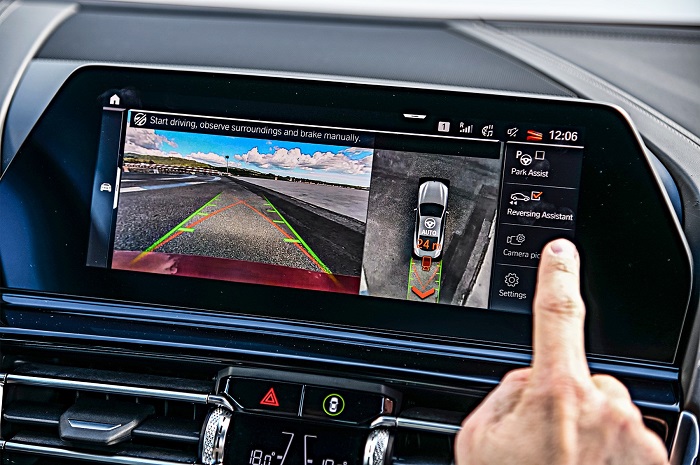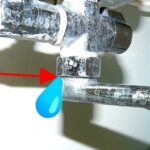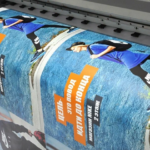In modern vehicles, reverse cameras are becoming a standard feature, providing drivers with enhanced safety and convenience when parking or reversing. Many factory-installed radios already support reverse cameras, displaying a live feed on the vehicle’s built-in screen. However, for those upgrading to aftermarket head units or for vehicles without this feature, adding a reverse camera can be a game-changer. With the right equipment and installation, you can seamlessly integrate a reverse camera into your car, making parking in tight spaces much easier and safer.
This guide will walk you through the benefits of reverse cameras, the different types available, and how to install one in your vehicle, whether you’re upgrading a factory radio or installing a new aftermarket head unit.
Why Install a Reverse Camera in Your Vehicle?
Reverse cameras provide several key benefits, especially for drivers who frequently park in tight or crowded spaces. Here’s why you should consider installing one:
- Enhanced Safety: Reverse cameras improve visibility behind your vehicle, eliminating blind spots and helping you avoid obstacles, pedestrians, or other cars. This is particularly helpful in areas with limited space, such as parking lots or driveways.
- Easier Parking: Many reverse cameras come with parking guidelines that help you predict the trajectory of your vehicle based on the wheel position. This makes parallel parking and reversing into tight spaces much easier.
- Preventing Damage: Reverse cameras help you avoid bumps, scratches, and other damage by giving you a clear view of curbs, walls, and other obstacles that may be difficult to see in your mirrors.
- Peace of Mind: With a reverse camera, you’ll feel more confident when reversing, knowing that you have a clear and unobstructed view of what’s behind you.
Reverse Cameras and Factory Radios
If your car came with a factory-installed radio that supports a reverse camera, integrating this feature can be relatively simple. Many OEM head units have built-in video inputs for reverse cameras, making it easy to connect a compatible camera. The reverse camera feed will automatically display on the screen when you shift into reverse.
Adding a Reverse Camera to Aftermarket Radios
For those upgrading to an aftermarket radio, it’s essential to choose a head unit that has the appropriate video input for a reverse camera. Most modern aftermarket radios with touchscreen displays support reverse camera integration, but you’ll need to ensure that the radio has the necessary connections for video input and the ability to switch to the reverse camera feed automatically.
Connects2 offers a range of vehicle-specific interfaces, under the Connects2Vision line, which provide easy integration of reverse cameras into both factory-installed and aftermarket radios. These products are designed to work with the specific wiring and connections of your car, making installation more straightforward and ensuring compatibility.
For all the necessary adapters and kits, you can visit Autoradio Adapter, where you’ll find vehicle-specific products that make adding a reverse camera seamless.
Types of Reverse Cameras: Which One to Choose?
When choosing a reverse camera, it’s important to select a model that suits your vehicle and your preferences. The most common options include:
- Number Plate Cameras: These small cameras are mounted behind or above your vehicle’s number plate, offering a discreet and easy-to-install solution. They are one of the most popular choices due to their low-profile design.
- Boot Handle Cameras: These cameras are integrated into the boot handle or rear tailgate. While slightly more expensive, they offer a nearly invisible installation, blending seamlessly with the vehicle’s design.
- Pedestal Cameras: Mounted just above or below the number plate, these cameras are always visible. They provide a larger field of view but may stand out more than other camera options.
Each of these cameras offers clear visibility and can be connected to a factory or aftermarket radio that supports reverse camera input. If you’re unsure which camera is best for your vehicle, check with your supplier for recommendations based on your car’s make and model.
You can explore a range of reverse camera kits at Autoradio Einbauset, where you’ll find options tailored to specific vehicles and aftermarket setups.
How to Install a Reverse Camera
Installing a reverse camera requires careful routing of the wiring and connecting it to your head unit. While the process can vary depending on the type of camera and vehicle, here’s a general overview:
Step 1: Mount the Reverse Camera
Start by mounting the camera in your desired location. Whether it’s a number plate camera, boot handle camera, or pedestal camera, ensure the view is clear and unobstructed. The camera should be positioned so that it provides a wide-angle view of the area behind your vehicle.
Step 2: Route the Wiring
Next, route the camera’s video and power cables from the rear of the vehicle to the dashboard. This can be done by running the cables along the vehicle’s interior trim, such as door sills or under floor mats. Make sure to secure the wiring with zip ties or clips to prevent any loose wires from getting in the way.
Step 3: Connect the Power
The reverse camera needs power to function. Typically, the power connection is wired to your vehicle’s reverse lights so that the camera automatically activates when you shift into reverse. To do this, locate the reverse light wiring in your vehicle and connect the camera’s power cable to it.
Step 4: Connect the Video to the Head Unit
If you’re using a factory radio that supports reverse cameras, simply plug the video cable into the radio’s video input. For aftermarket radios, ensure that the head unit has a video input port and connect the video cable there.
Step 5: Test the Camera
Once everything is connected, test the reverse camera to ensure it’s working properly. Put your car in reverse and check the display to ensure the camera feed is clear and the guidelines (if available) are working correctly.
Why Choose Connects2Vision for Reverse Camera Integration?
For a seamless installation, Connects2Vision offers vehicle-specific interfaces and wiring harnesses tailored to different car models. These products ensure that the reverse camera integrates smoothly with both factory-installed and aftermarket radios, eliminating the need for complex modifications or wiring splices.
If you’re looking for a reliable and easy-to-install reverse camera kit, explore the options available at Autoradio Anschlusskabel, where you can find all the necessary cables and harnesses for your setup.
Conclusion: Make Parking Easier with a Reverse Camera
A reverse camera can significantly enhance your vehicle’s safety and make parking a breeze, whether you’re driving a small car or a larger van. With options ranging from discreet number plate cameras to integrated boot handle cameras, you can choose the solution that best fits your vehicle’s design and needs.
To ensure smooth integration with your car’s radio and electrical system, be sure to use vehicle-specific interfaces from Connects2Vision and browse the range of adapters and installation kits available at autoradio-adapter.eu.













